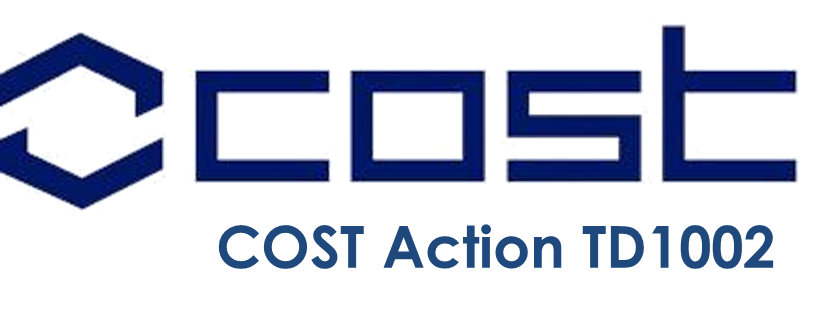PARTNERS
 Biological Adhesives: from Biology to Biomimetics
Biological Adhesives: from Biology to Biomimetics
The main objective of this Action is to gain new understanding relating to the mode of action of biological adhesives so as to facilitate the development of synthetic counterparts with improved function. These bio-inspired adhesives will provide more elegant solutions to contemporary engineering and biomedical adhesive requirements and will additionally provide a platform for future technological innovation that requires adhesion in hostile conditions as a prerequisite. Biological adhesives often offer impressive performances and, therewith, the potential to inspire novel, superior industrial adhesives for an increasing variety of high-tech applications. Using an iterative, multidisciplinary biomimetic approach, structures, functions and principles of natural models can be experimentally studied, theoretically analyzed, and prototyped in order to bring innovative bio-inspired adhesives to the market. This COST Action will unite widespread European expertise and activities in the fields of biological and technological adhesives (biology, physics, chemistry, and engineering), streamlining and pooling knowledge, methods and techniques, avoiding duplication of effort, decreasing costs, and accelerating scientific and technological progress in Europe.
Visit the site: http://www.cost-bioadhesives.org/
![]()
 European network on applications of Atomic Force Microscopy to NanoMedicine and Life Sciences
European network on applications of Atomic Force Microscopy to NanoMedicine and Life Sciences
Atomic Force Microscopy AFM) has become an enabling platform in nanotechnology. It has provided a great impact in Life Sciences and is becoming indispensable also in NanoMedicine. NanoMedicine is an emerging area, which focuses in imaging, early diagnosis, pathological tissue analysis, and drug delivery. Although significant efforts have been devoted to enhancing the performance of AFM, full exploitation of its capabilities has been hampered by the uncoordinated relationship between researchers active in fundamental sciences, and users in the biomedical field. In addition, due to the swift development of AFM, Life science scientists depend on collaboration with experts in physical sciences to utilize the power of AFM instrumentation. This COST Action aims at bundling the expertise of the most active European AFM laboratories with the biomedical scientific environment into a network to foster further enhancement of AFM instrumental development, and explore and support its extensive applications in Life Sciences and Nanomedicine. Similar to the evolution of the Nuclear Magnetic Resonance technique, which has evolved to enabling Magnetic Resonance Imaging and its widely use in clinical diagnosis, AFM holds the promise to perform the same transition. The result of this COST Action would be to shorten the transition period.
Visit the site: http://www.afm4nanomedbio.eu/
![]()
 The Italian Society for Pure and Applied Biophysics (SIBPA) is an open and no-profit scientific association founded in 1973. It is the oldest biophysical society in Italy and the only italian society included among national representatives of IUPAB (International Union for Pure and Applied Biophysics) and EBSA (European Biophysical Societies' Association). SIBPA institutional aims are: a) to promote and facilitate the dissemination of knowledgein biophysics; b) to support and organize initiatives for education, training and updating in biophysics-related issues; c) to enhance the collaboration between laboratories at universities and research institutions; d) to organize meetings, conferences and seminars on biophysical topics and establish scholarships and awards for young researchers engaged in biophysical researches. Every two years SIBPA holds a National Congress whose main topics range from molecular to integrative biophysics. In recent editions, nanobiophysics and advanced microscopies have been added. Since 1997 SIBPA promotes and organizes, jointly with IVSLA (Istituto Veneto di Scienze, Lettere ed Arti) in Venice, Italy, the well-established annual International School of Pure and Applied Biophysics, dealing with cutting-edge topics in biophysics. SIBPA regularly announces merit-based scholarships and travel grants to attend the EBSA and the USA Biophysical Society meetings, and its biennial National Congress.
The Italian Society for Pure and Applied Biophysics (SIBPA) is an open and no-profit scientific association founded in 1973. It is the oldest biophysical society in Italy and the only italian society included among national representatives of IUPAB (International Union for Pure and Applied Biophysics) and EBSA (European Biophysical Societies' Association). SIBPA institutional aims are: a) to promote and facilitate the dissemination of knowledgein biophysics; b) to support and organize initiatives for education, training and updating in biophysics-related issues; c) to enhance the collaboration between laboratories at universities and research institutions; d) to organize meetings, conferences and seminars on biophysical topics and establish scholarships and awards for young researchers engaged in biophysical researches. Every two years SIBPA holds a National Congress whose main topics range from molecular to integrative biophysics. In recent editions, nanobiophysics and advanced microscopies have been added. Since 1997 SIBPA promotes and organizes, jointly with IVSLA (Istituto Veneto di Scienze, Lettere ed Arti) in Venice, Italy, the well-established annual International School of Pure and Applied Biophysics, dealing with cutting-edge topics in biophysics. SIBPA regularly announces merit-based scholarships and travel grants to attend the EBSA and the USA Biophysical Society meetings, and its biennial National Congress.
Visit the site: http://sibpa.roma2.infn.it/
![]()
 The National Research Council (CNR) is a public organization; its duty is to carry out, promote, spread, transfer and improve research activities in the main sectors of knowledge growth and of its applications for the scientific, technological, economic and social development of the Country. To this end, the activities of the organization are divided into macro areas of interdisciplinary scientific and technological research, concerning several sectors: biotechnology, medicine, materials, environment and land, information and communications, advanced systems of production, judicial and socio-economic sciences, classical studies and arts. CNR is distributed all over Italy through a network of institutes aiming at promoting a wide diffusion of its competences throughout the national territory and at facilitating contacts and cooperation with local firms and organizations. From the financial point of view, the main resources come from the State, but also from the market: even 30% of its balance sheet, an extraordinary result, is the result of revenues coming from external job orders for studies and activities of technical advice as well as from agreements with firms, contracts with the European Union and with the other international organizations.
The National Research Council (CNR) is a public organization; its duty is to carry out, promote, spread, transfer and improve research activities in the main sectors of knowledge growth and of its applications for the scientific, technological, economic and social development of the Country. To this end, the activities of the organization are divided into macro areas of interdisciplinary scientific and technological research, concerning several sectors: biotechnology, medicine, materials, environment and land, information and communications, advanced systems of production, judicial and socio-economic sciences, classical studies and arts. CNR is distributed all over Italy through a network of institutes aiming at promoting a wide diffusion of its competences throughout the national territory and at facilitating contacts and cooperation with local firms and organizations. From the financial point of view, the main resources come from the State, but also from the market: even 30% of its balance sheet, an extraordinary result, is the result of revenues coming from external job orders for studies and activities of technical advice as well as from agreements with firms, contracts with the European Union and with the other international organizations.
Visit the site: http://www.cnr.it/sitocnr/Englishversion/Englishversion.html